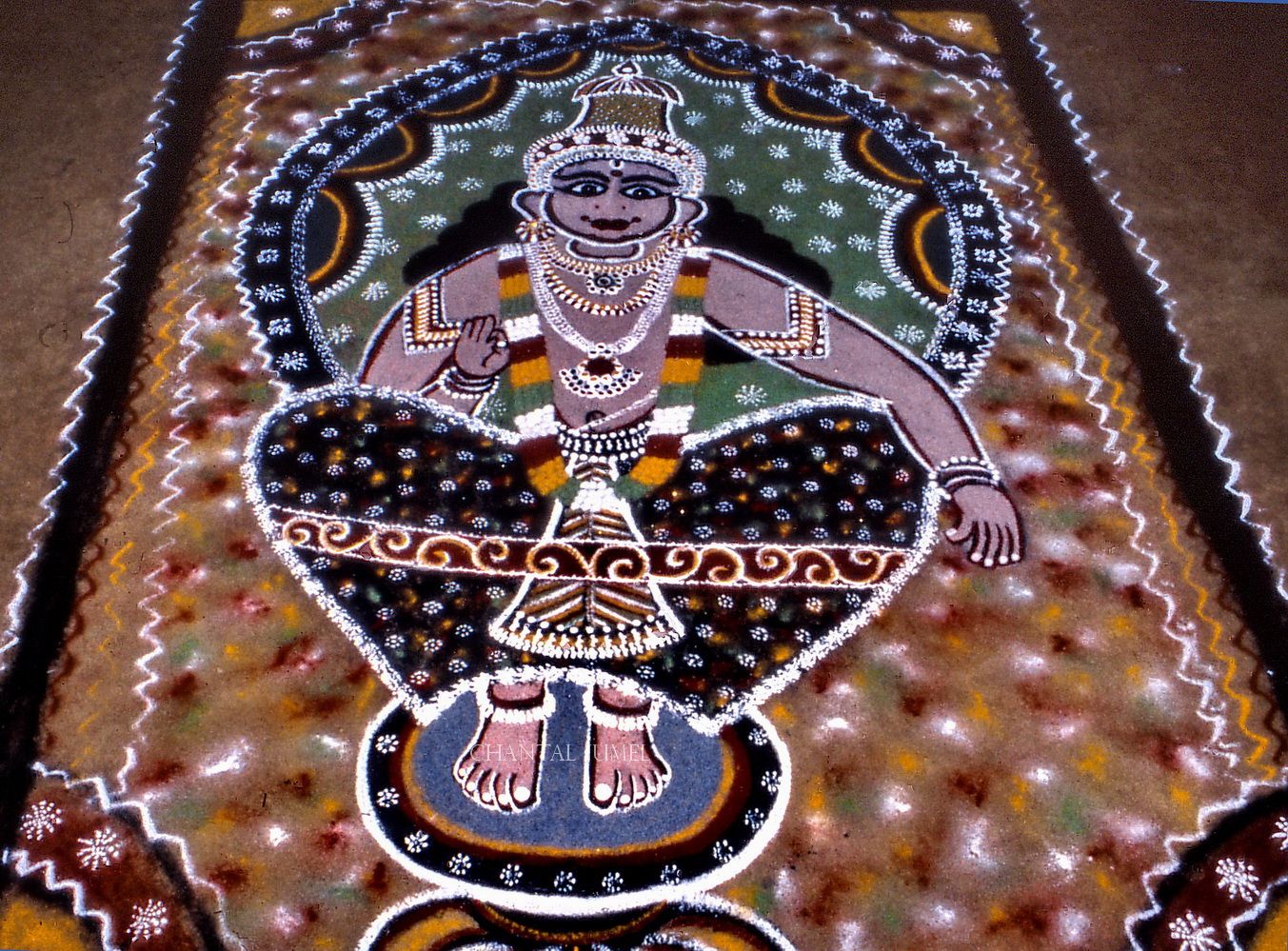Kerala Kalam, "Ayyappan, the Lord of Sabarimala"— part 1
The 41-day mandalakalam period, which starts in Vrikshikam (November-December) and culminates by December-end, embodies a time of intense religious fervour and austerities, particularly in temples of Ayyappan and the Goddess. This ritual period benefits the kalam painters.
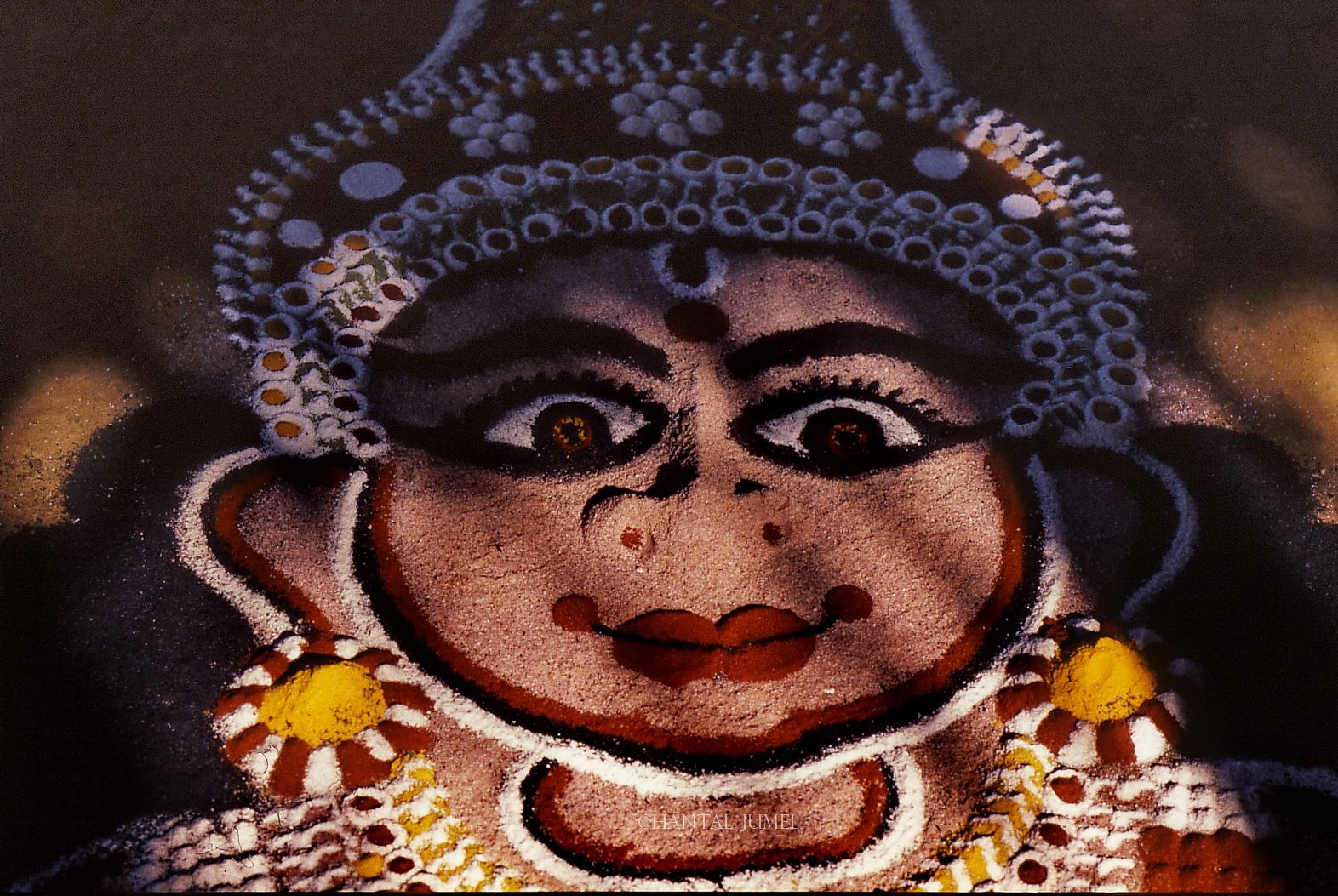
"ആശാൻ" (teacher), who are these bearded men in black or blue dhotis, carrying on their heads, a two-compartment cloth bag, wearing holy beads around the neck, and walking with determination on the roads while singing their hearts out? They are Ayyappan devotees, answered my teacher, and they are on their way to the hill shrine of Sabari. The first time I saw these groups, I was quite surprised. During my studies in Kerala, for forty-one days, many times a day, groups of men and few female pilgrims would pass along the road, led by a leader calling out "Swamiye Ayyappo" (Lord Ayyappa) and the group would respond "Ayyappo Swamiye, Sharanam Ayyappa" (Ayyappa, the sole refuge). From morning to evening, the village was punctuated by the stream of loudspeakers pouring out popular songs dedicated to Ayyappan, the Lord of Sabarimala, a god also called “Dharma-Shasta" (teacher, guide).
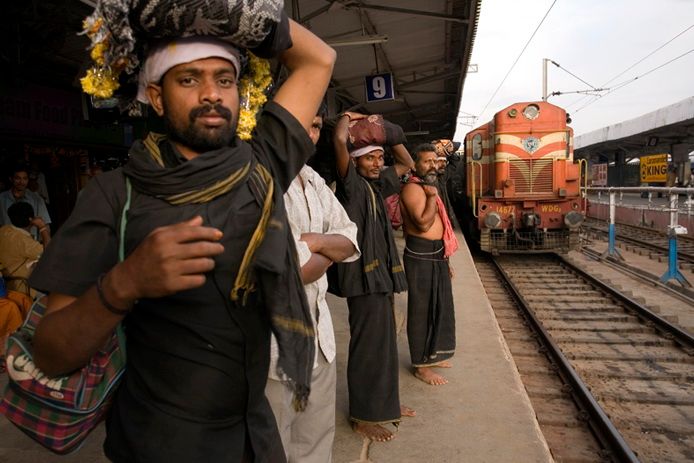
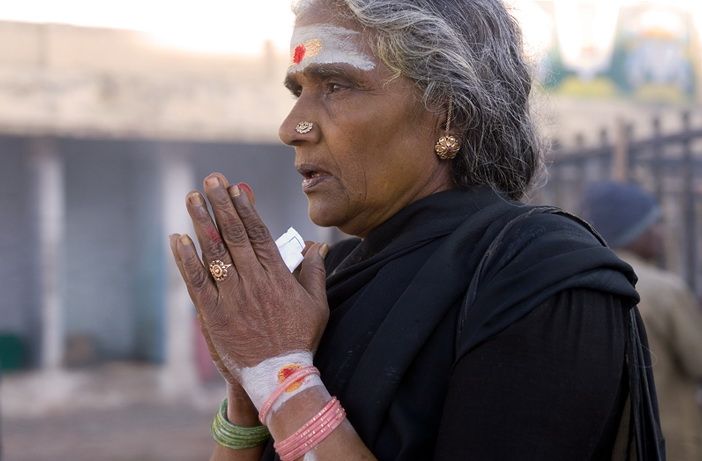
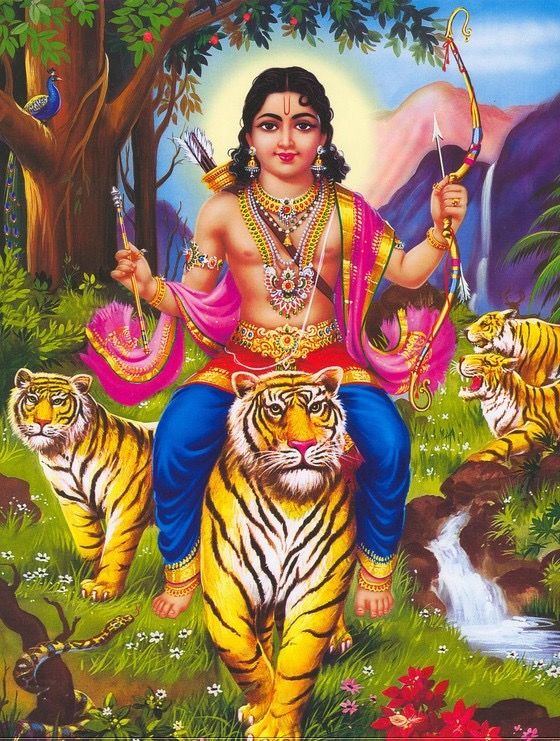
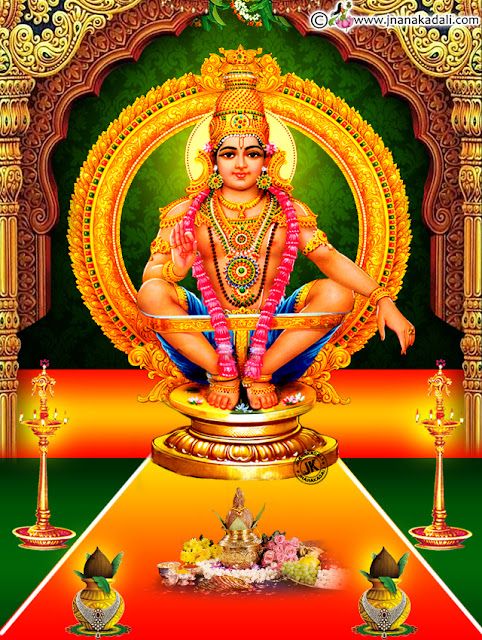
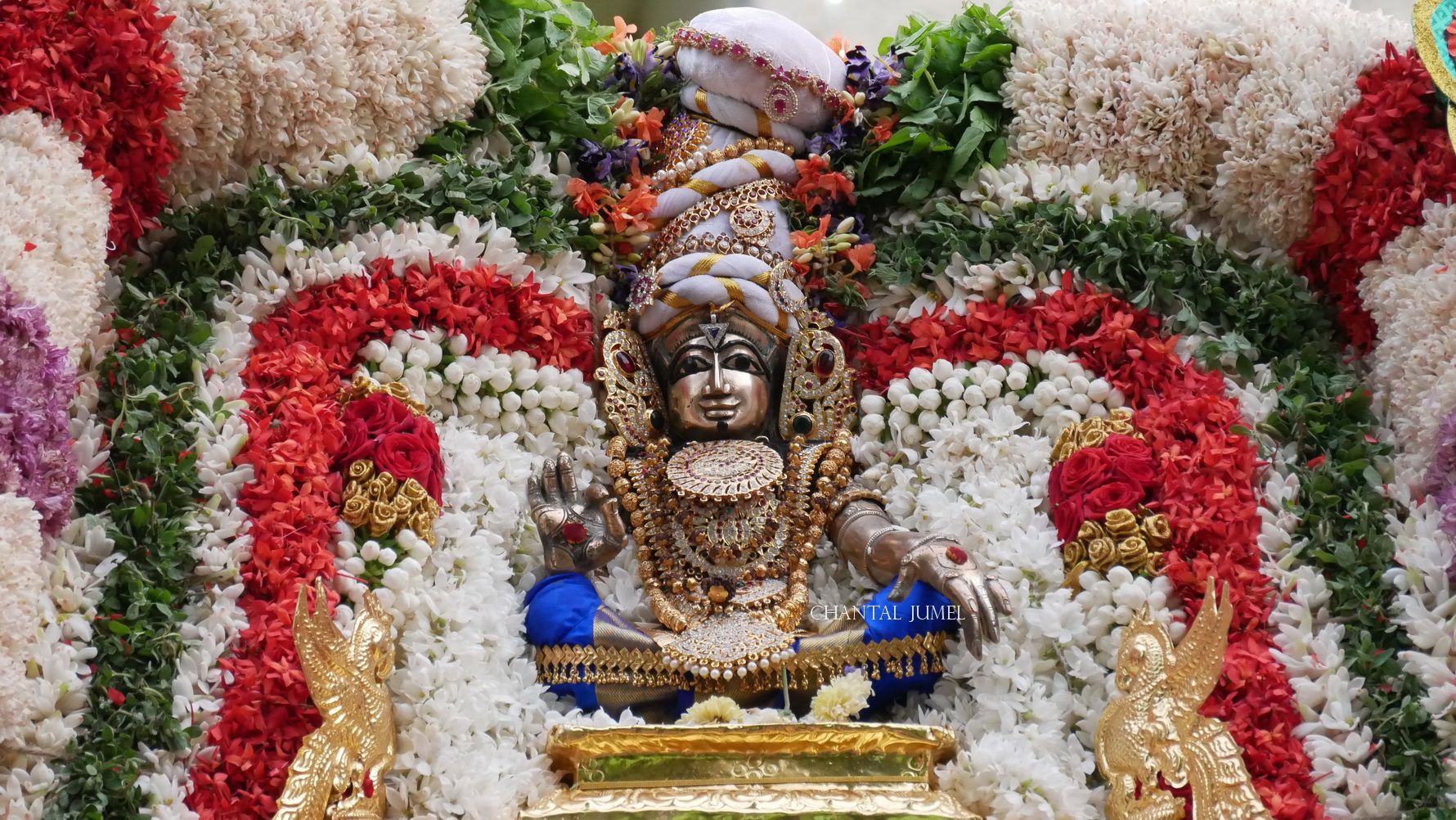
While Murugan is popular in Tamil-Nadu, Ayyappan is the beloved god of the Keralites because his personal story starts in the thick forests of Kerala on the banks of the Pampa river. I was all the more amazed by this local legend as I lived by this river and bathed in it almost every day. Over the years, the pilgrimage has become popular in other states and even abroad. During the forty-one days of mandalakalam, there is no caste difference among pilgrims; brahmins, businessmen, simple craftsmen or farmers; they are all Ayyappan devotees. The worship of this god is an astonishing syncretism between Shivaism and Vaishnavism, with an association with a Muslim saint Vavar, venerated by the Kerala Hindus because he was once the faithful companion of Ayyappan.
Mandalakalam, a special time for kalam painters
The 41-day mandalakalam period, which starts in Vrikshikam (November-December) and culminates by December-end, embodies a time of intense religious fervour and austerities, particularly in temples of Ayyappan and the Goddess. This ritual period benefits the kalam painters. They belong to the community of Ambalavasi, literally "temple-dwellers'. They form a group that renders temple services. Some members accompany the daily worship with songs, along with drumming; others make garlands, maintain the inner courtyards of the temple, and clean the votive objects. If some members exclusively paint the images of the Goddess, others portray only God Ayyappan. Still others have a wider repertoire incorporating images of the Goddess, Ayyappan, the Nâga, and various deities. During mandalakalam, the Ambalavasi's duties vary in accordance with private patrons or temple board offices, lasting a single day, several consecutive days or all the 41 days of mandalakalam. Mr. Parameswara Kurup belongs to this community. I owe him a debt of gratitude for having introduced me to his fabulous floor paintings kingdom. With each new encounter, he drew his repertoire of Goddess Bhadrakali, Ayyappan, etc.
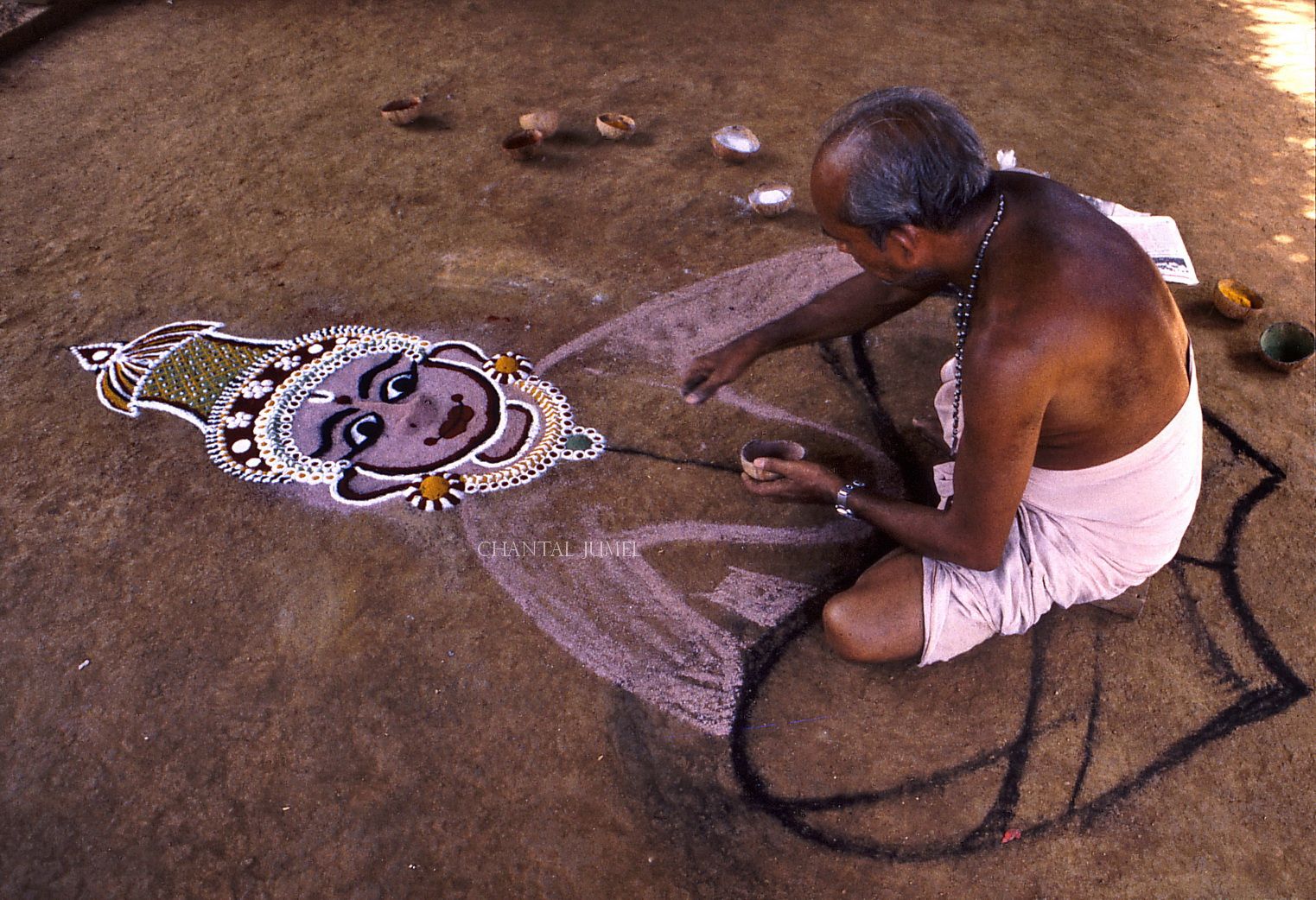
In traditional iconography, Ayyappan is shown standing, or mounted on a horse or a leopard, and brandishing a bow and arrow. The scenes illustrate the important episodes of the myth, namely the stay in the forest and the triumphant return on the back of a tiger. In all of Parameswara Kurup's paintings, Ayyappan appears as a teenager with a noble and serene expression. The tiger looks more like a big cat than a wild animal and the horse is small. The green background symbolises the earthly embodiment of the god.
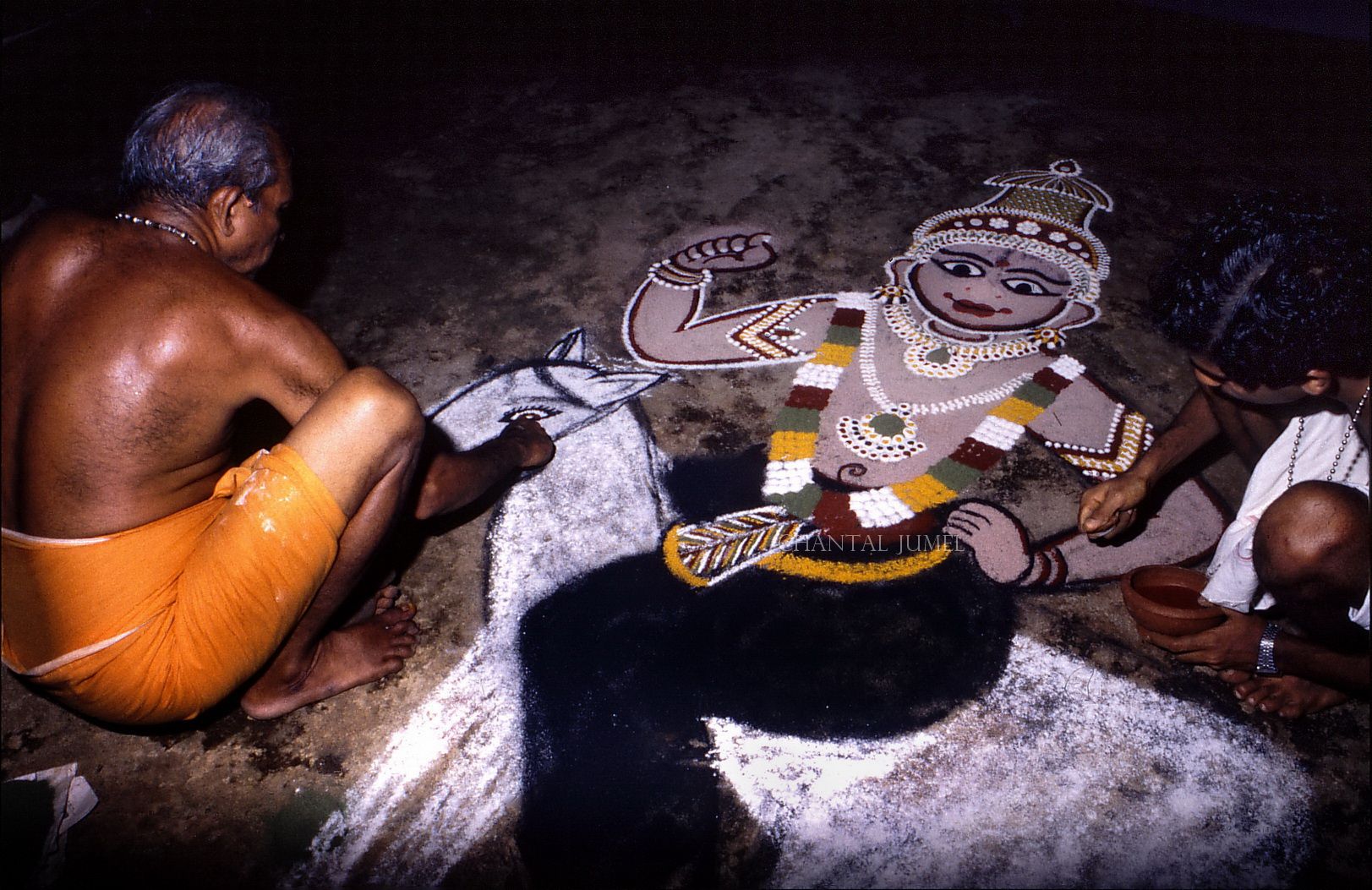

The birth of Ayyappan
When the buffalo demon Mahisha was annihilated by Goddess Durga, his sister Mahisi decided to avenge him. She undertook arduous austerities to obtain a boon from the gods. Brahma granted her the dubious boon of dying only at the hands of the son begotten by the union of two male gods (Shiva and Vishnu). Convinced of the impossibility of such an outcome, she became even more arrogant. God Vishnu took the appearance of Mohini the Enchantress, and Shiva, not resisting her beauty, united with her at once and from their loving embrace, a child was born. They purposely abandoned the boy in the thick forests of Kerala near the Pampa River. The pious and charitable king of Pandalam, who was hunting in the area, discovered the child lying lonely. Several thoughts crossed the king's mind: "How did this marvellous child come to be here in this forest full of wildlife?" At that moment, a venerable old man (Vishnu in disguise) appeared from nowhere and said to him: "Call him Manikanta (who wears a bell around his neck), take care of him as your own son (the king had no heir to his throne), and you will be blessed. Manikantan grew up in the joy and affection of all. Soon he proved to be a brilliant rider and exhibited extraordinary prowess in archery and fencing.
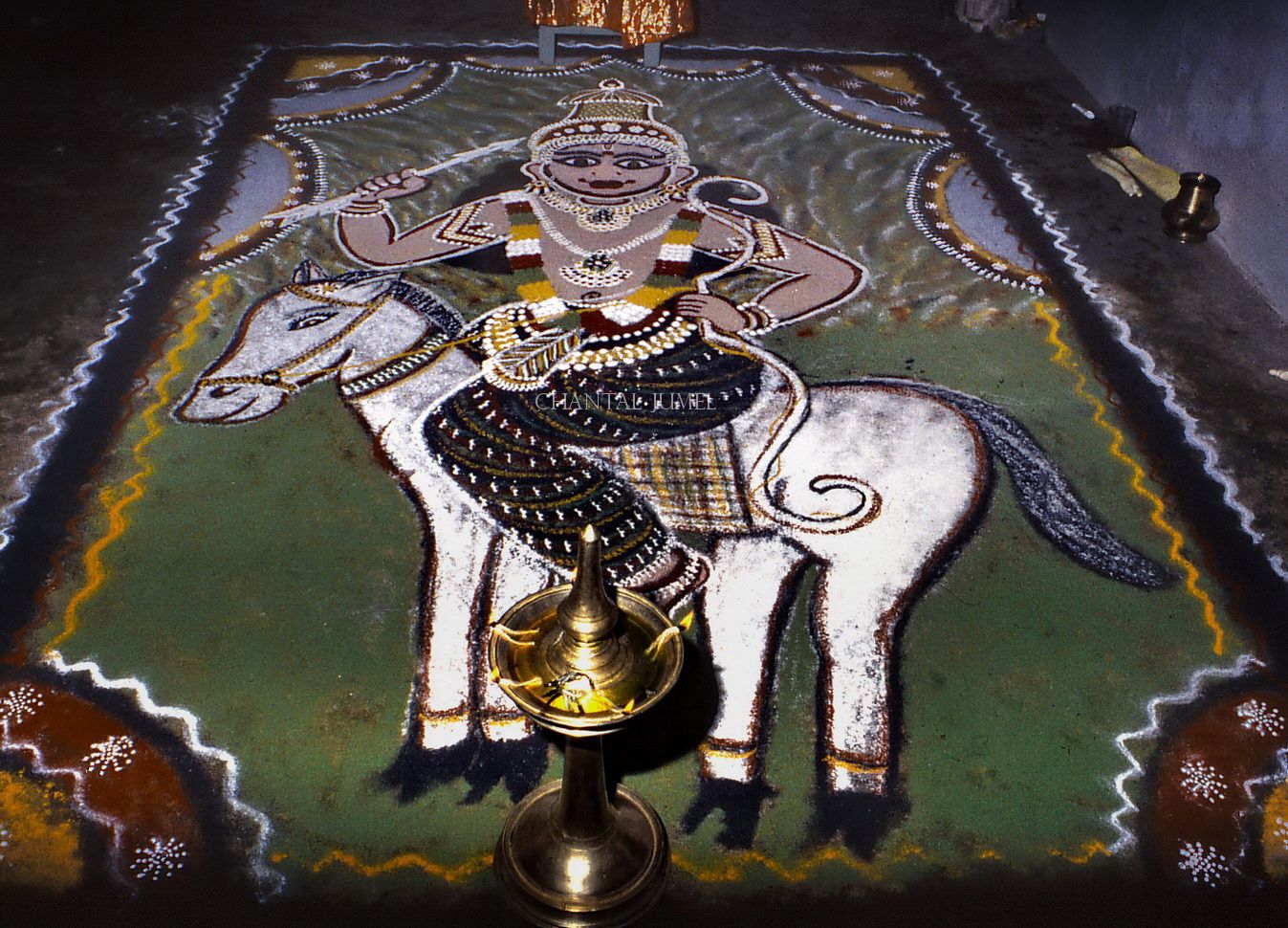
After many years, the queen conceived a child whom she naturally preferred to Manikantan. Together with the corrupted king's minister, she devised a plan to prevent the adopted son from being crowned. The minister suggested that she should pretend to have a severe headache that only the milk of a tigress could cure. The courageous Manikantan, went alone to the forest to accomplish the task. The queen thought that as soon as he entered the forest, he would be attacked by wild animals and that her own son would then ascend the throne of Pandalam. On the way, he met the demoness Mahishi who tormented the immortals, grabbed her by the horns, spun her around in the air, and killed her. His first mission was accomplished, and the gods rejoiced. Indra and the Immortals transformed into tigers, returned with the radiant child making a triumphal entry into the palace.

His parents having heard a voice in the sky understood that he was no ordinary child but a divine incarnation. The beloved son told them that his time on earth was over and that he had to go. The father asked him to choose a place to erect a temple. Manikhanta took his bow and shot an arrow which landed on the mountain of Sabarimala.
